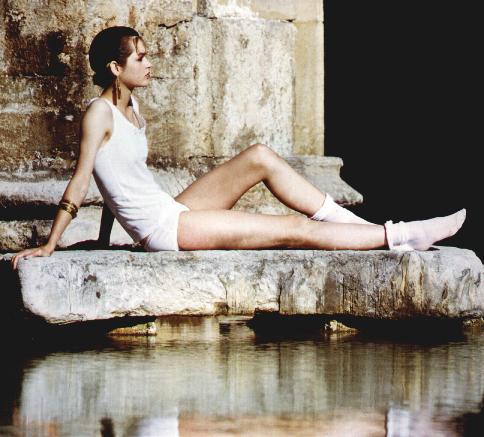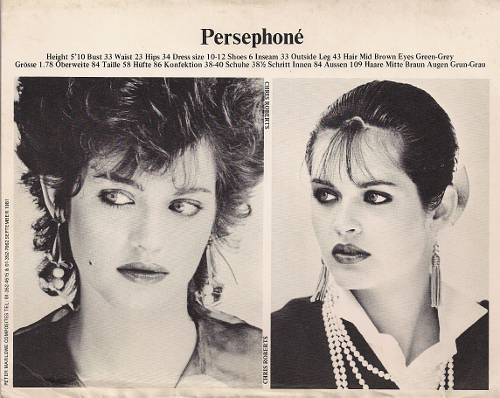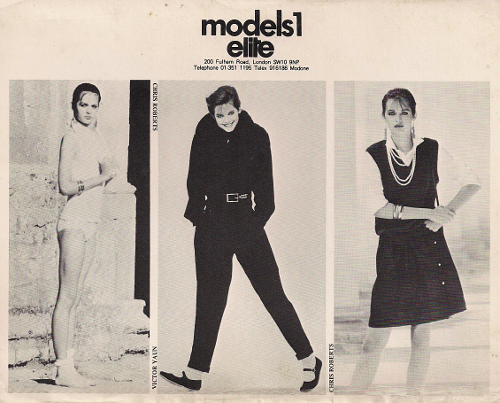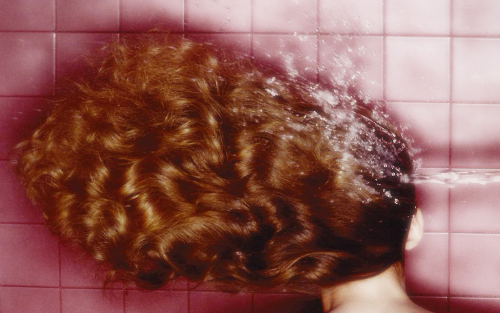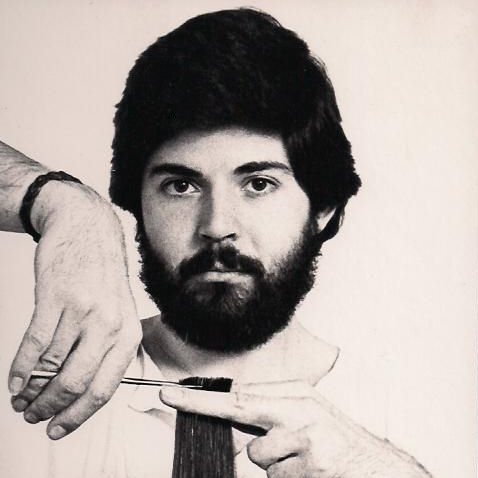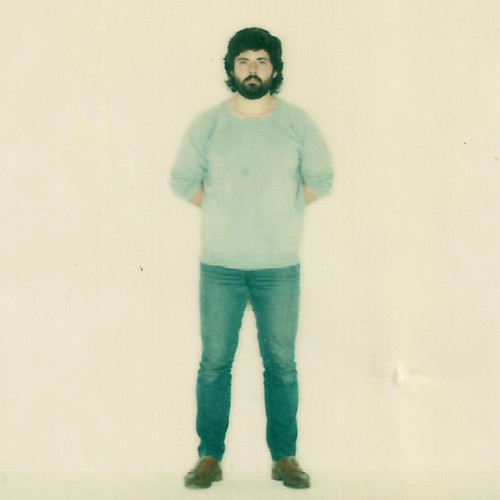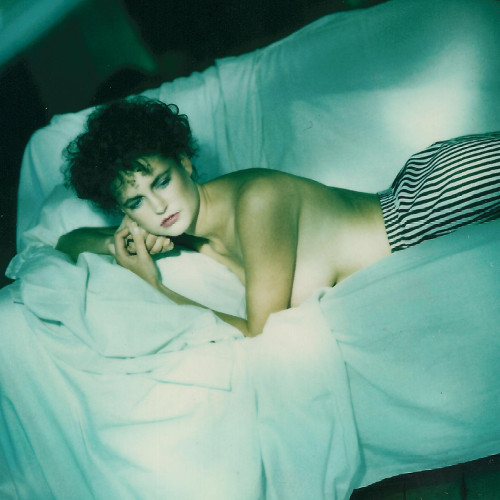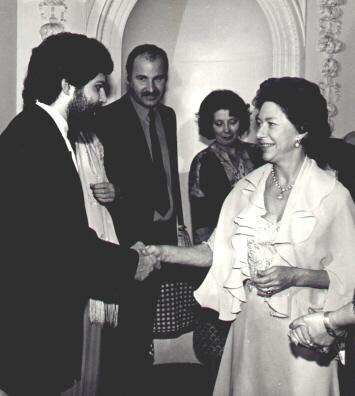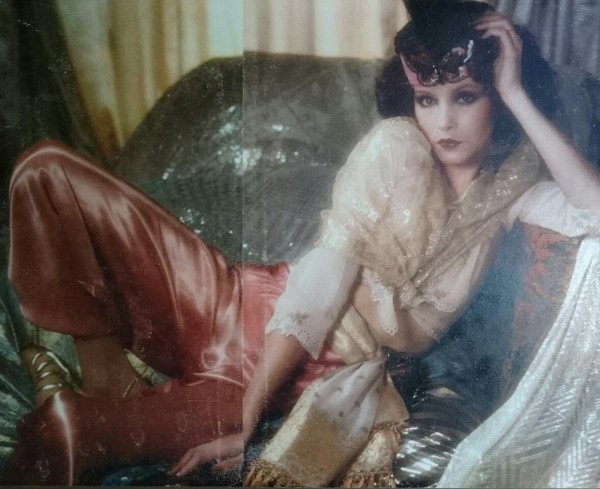#oilyhairproblems The 14 eternal struggles of having to wash your hair every day – https://t.co/dRvAXt0Rda
— WESTROW (@WestrowHair) January 17, 2016
Are you washing your hair every day? @WestrowHair tweeted a slightly gloomy and tongue-in-cheek article that carries the title, The 14 eternal struggles of having to wash your hair every day and with the subtitle, “I know it strips the hair of its essential oils, but it’s either that or I look like I suffer from the bubonic plague.” by Catriona Harvey-Jenner @CatHarveyJenner.
I fully understand that washing your hair every day isn’t necessarily enjoyable, but I was saddened by Catriona’s comment, “It’s not a choice you know.” I don’t know Catriona or her hair. I hope this reply to Cat’s article will get her thinking.
Greasy hair is a surprisingly big topic; it’s also a topic that I think about every time I cut hair (I’ll explain that later)!
Just in case you don’t know: the grease, sebum, is secreted through pores in your skin by the sebaceous glands – they’re all over your body apart from the palms and the soles of your feet. Sebum protects the skin from water (getting in and out), and is antibacterial and antifungal – basically, it’s bloody good stuff. Hair moves sebum from its roots to its ends V.quickly.
Washing your hair every day? My comments on Catriona’s article
I’ll follow/use Cat’s list headings – read her article first and then you’ll see where I’m coming from.
You have to wash your hair every day:
It is perfectly OKAY to wash your hair every day. If you are washing your hair every day, are you washing it correctly? See: The secret of perfect hair: shampoo it CORRECTLY! Most of the people I know who have issues with greasy hair, and wash their hair every day, only give their hair one wash – you need to wash it twice!
Unfortunately washing hair takes time, plus it needs drying, the whole process could easily take an hour; yeah that’s a struggle every morning.
You get through a lot of shampoo:
When washing hair, always use the smallest amount of shampoo possible and wash it twice – More shampoo is never better. Make sure you’re using the correct shampoo for your hair type. Expensive, celebrity shampoos aren’t better – £3.99 or £39.99 there’s not a lot of difference; you don’t get what you pay for! However, you may stumble across an expensive shampoo that you really like and suits your hair, that’s a bummer. Don’t get taken in by all the hair and fashion industry bollocks.
You don’t understand how people can get away with washing it once or twice a week:
Washing ones hair two, three or four times a week is about normal!!! However, my grandmother (1906 – 1981) washed her hair fortnightly, and I used to wash my hair twice a day: in the morning before work and again in the evening after sports.
A lot of people wash their hair every other day, that means: washing your hair four times in week 1, and three times in week 2 (a 14 day cycle).
BTW, body oil, sebum, is naturally healthy! Greasy hair is healthy hair.
Yeah, we know it strips the hair of its essential oils:
Yeah, well, the essential oils, if that’s what you want to call them, are continually being secreted from the sebaceous glands. Washing your hair every day is not going to do any harm. Equating hair with essential oils is almost total bollocks – some people have little to no sebum, and their hair is perfectly okay. You could always use a minuscule drop of hair conditioner or Argan oil on the extreme ends?
And we’re aware it’s a habit we’ve got to break:
In my humble opinion: it’s not the habit of washing your hair that’s the problem, it’s the addiction to the feeling of bouncy, fluffy hair that is the issue – especially if your hair type and style wants to be flat and floppy.
If you want to wash your hair every day, that’s perfectly okay.
Festivals are a no-go:
Absolute Bollocks. Get stuck in. I was going to try and make a music festival joke quoting Cat’s, “greasy monstrosity,” but I won’t!
You’ve heard hair is self-cleaning:
That’s not strictly true – but in a perfect world it is. The problem is pollution; particulate matter, often very corrosive, that stick to the grease on the hair shaft and needs to be removed with a detergent/shampoo.
Work related particulate matter may also be a problem.
Dry shampoo just doesn’t cut the mustard:
Dry shampoo has its place, but it’s certainly Not for everyone – I’d say it works better on blondes! It can give some body to thin hair. Calling all brunettes: if you’ve got a problem with greasy hair, steer clear of dry shampoo.
Neither does ‘wearing it up’:
Chignons work much better on dirty hair, which is always an issue for brides. If you’ve got greasy Mel C bits hanging down over your face, you’re not doing it correctly – talk to your hairdresser for tips.
You thought it was just a teenage phase:
At this point I’ve got to ask, ’Have you got over active sebaceous glands?’ If you suffer from acne, you may have. Take a look at your diet and lifestyle. Stress, junk food, alcohol and cigarettes will fuck your skin and hair.
Hormonal fluctuations caused by menstrual cycle, pregnancy, menopause, illness and medication can/often cause an increase in sebum secretion.
Sometimes you can get away with just wetting your hair in the shower and not washing it:
For me this is a revealing statement. No shampoo in the house: use an incredibly small amount of washing-up liquid (it’s stronger than shampoo).
If you can get away with just wetting the hair, I really wouldn’t bother – rinsed and blow-dried hair is horrid, worse.
Baths are simply not possible:
Yeah, don’t wash your hair in bath water.
If we don’t wash our hair, we face leaving the house looking something like this:
No comment!
This kind of comment is just ignorant. IT’S NOT A CHOICE YOU KNOW:
No comment! But it is always your choice.
How To Stop Washing Your Hair Every Day
- Get a new hairstyle – mingin looking hair is almost always caused by the wrong choice of hairstyle.
- Identify if you really have got over active sebaceous glands (causes acne, see doctor). If you wash your hair in the morning and then it loses its bounce somewhere between lunch and dinner, that could be normal. Look at your hair type and style – talk to your hairdresser.
- I said, “it’s a topic that I think about every time I cut hair,” that is because hair type is crucial to style – long, thin, naturally straight, fine, mousy-brown, greasy and damaged hair isn’t going to retain a bouncy and fluffy state past lunchtime. Talk to your hairdresser and get the correct haircut for your hair type.
- Look at your lifestyle (stress) and diet; eat: peppers, sweet potatoes, carrots, spinach, mango, papaya, apricots, blueberries, sardines, salmon, pumpkin & ground flax seeds, walnuts and wheat germ – I’m talking, lots of multi-coloured fruit and vegetables, oily fish, nuts, seeds and grains. Cut down on the alcohol, onions and garlic.
- Product build-up may also be an issue (even some shampoos can leave a residue). The most common cause for dull, drab hair is product overload. Start by shampooing your hair with a clarifying, anti-residue shampoo, which should remove up to 70% of the residue left from hair products.
- After shampooing, try giving your hair a final rinse with V.cold water; it will delay the flow of sebum. However, a hot blow-dry will reverse the effect, so keep that cool too – Heat makes oil flow faster (inc. central heating)!
- Don’t use a conditioner unless the ends are overly tangled, and then only a very little on the tips.
- Loads of fine, bleached highlights are brilliant for adding body to long(ish) hair, therefore enabling the hair to hold more sebum before it flattens.
- Short hair tends to be much easier to cope with generally, obviously it washes and dries faster.
- A great habit to get in to: pick a day of the week to get yourself outside in the fresh air, and don’t wash your hair – No hats please – Your hair will smell of ozone, lovely.
If you’ve got a question on this subject, please don’t hesitate to ask.

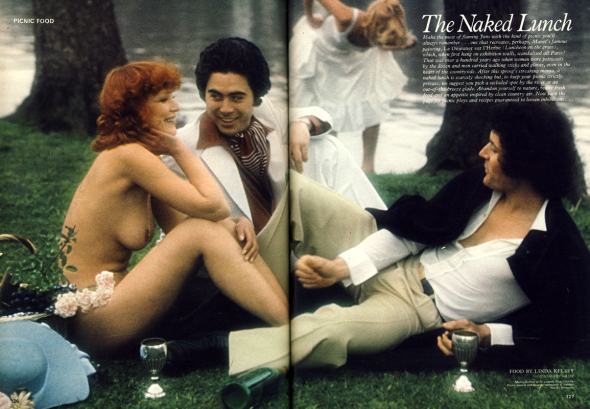 The naked lunch by Jim Lee (fashion photographer) for Cosmopolitan (June 1974) after Le déjeuner sur l’herbe (The Luncheon on the Grass) by Édouard Manet (1863). Courtesy of
The naked lunch by Jim Lee (fashion photographer) for Cosmopolitan (June 1974) after Le déjeuner sur l’herbe (The Luncheon on the Grass) by Édouard Manet (1863). Courtesy of 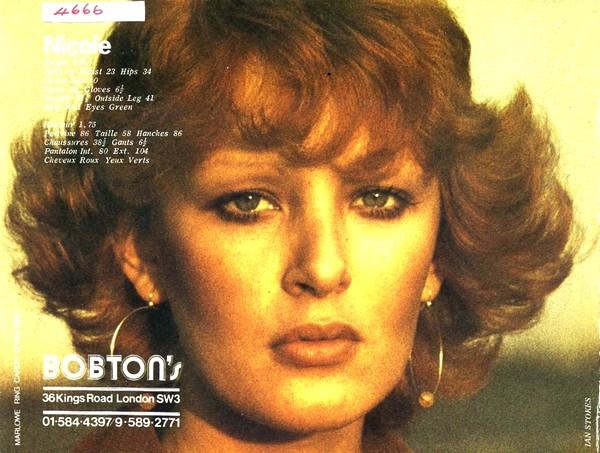
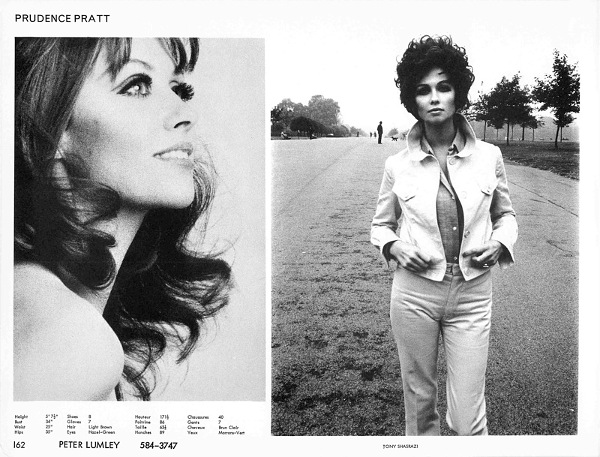
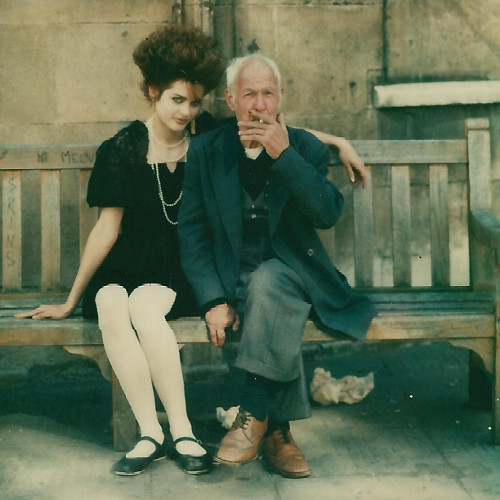 Persephone old boy. Photographer: Chris Roberts. Model: Persephone. Hair: Ian (me). Makeup: Arianne. Bath 15:08:1981. Test Session Polaroid.
Persephone old boy. Photographer: Chris Roberts. Model: Persephone. Hair: Ian (me). Makeup: Arianne. Bath 15:08:1981. Test Session Polaroid.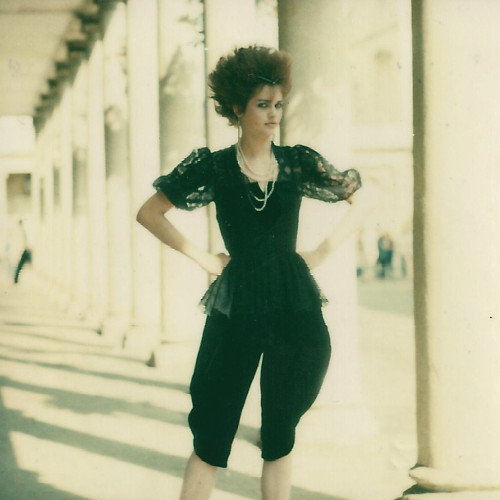 Persephone in Bruce Oldfield. Photographer: Chris Roberts. Model: Persephone. Hair: Ian (me). Makeup: Arianne. Bath 15:08:1981. Test Session Polaroid.
Persephone in Bruce Oldfield. Photographer: Chris Roberts. Model: Persephone. Hair: Ian (me). Makeup: Arianne. Bath 15:08:1981. Test Session Polaroid.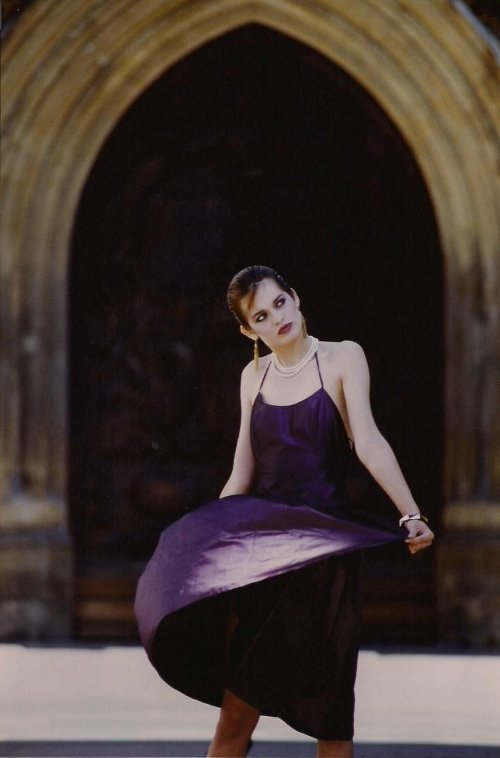
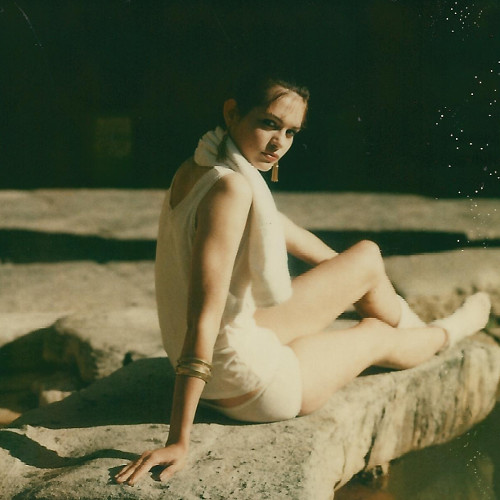 Persephone on diving stone. Photographer: Chris Roberts. Model: Persephone. Hair: Ian (me). Makeup: Arianne. Bath 16:08:1981. Test Session Polaroid.
Persephone on diving stone. Photographer: Chris Roberts. Model: Persephone. Hair: Ian (me). Makeup: Arianne. Bath 16:08:1981. Test Session Polaroid.